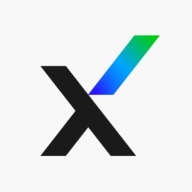


Find out what your peers are saying about Microsoft, Omnissa, ManageEngine and others in Unified Endpoint Management (UEM).
| Product | Market Share (%) |
|---|---|
| Blackberry UEM | 0.7% |
| Microsoft Intune | 33.0% |
| Workspace ONE UEM | 14.1% |
| Other | 52.199999999999996% |
| Product | Market Share (%) |
|---|---|
| Trellix Endpoint Security Platform | 3.9% |
| Microsoft Defender for Endpoint | 10.0% |
| CrowdStrike Falcon | 8.2% |
| Other | 77.9% |


| Company Size | Count |
|---|---|
| Small Business | 116 |
| Midsize Enterprise | 45 |
| Large Enterprise | 151 |
| Company Size | Count |
|---|---|
| Small Business | 67 |
| Midsize Enterprise | 36 |
| Large Enterprise | 59 |
Microsoft Intune provides centralized management of mobile devices and applications, ensuring security, compliance, and productivity through integration with Microsoft services like Microsoft 365 and Azure Active Directory.
Organizations use Intune for managing mobile devices and applications, enhancing security and compliance across platforms. With features like single sign-on, conditional access, and zero-touch deployment via Autopilot, it facilitates efficient operations. Intune's scalability, easy enrollment, and capabilities such as remote wipe support diverse device management, offering robust data protection and efficient operation. Despite its features, improvement areas include reporting, compatibility with non-Microsoft devices, and better support for macOS and Linux devices.
What are the key features of Microsoft Intune?
What benefits should users look for in reviews?
In industries such as finance, healthcare, and education, Microsoft Intune is implemented to ensure secure and compliant device management. Companies leverage its capabilities to deploy security policies and manage both corporate-owned and BYOD environments, facilitating a unified approach to data protection and compliance.
BLACKBERRY UEM
UNIFIED ENDPOINT MANAGEMENT WITH INDUSTRY-LEADING SECURITY
BlackBerry® UEM securely enables the Internet of Things with complete endpoint management and policy control for your diverse and growing fleet of devices and apps. With its single management console and trusted end-to-end security, BlackBerry UEM provides flexibility and security to keep your employees connected and protected so they can work from practically any device, anywhere.
Trellix Endpoint Security Platform offers essential features like centralized management, threat prevention, and encryption, facilitating seamless scaling and integration with other systems while prioritizing user security.
This comprehensive platform focuses on endpoint protection, antivirus capabilities, and malware defense. It enhances cybersecurity with data loss prevention, advanced threat detection, and AI-driven features for reliable protection without impacting performance. Central management and advanced reporting streamline integration and ease of use. Flexible policy deployment through the management console and its robust security measures, such as DLP and device control, further increase protection. Challenges include high CPU and memory usage affecting performance, a complex interface, and lengthy deployment. Third-party integration and Windows Hello support need improvement. Additional concerns involve improved threat detection and faster technical support responses.
What are the key features of Trellix Endpoint Security Platform?Trellix Endpoint Security Platform is widely implemented in industries such as banking and government for securing mobile and desktop devices. Its capabilities cover network security, device control, and remote access protection, catering to diverse environments by offering robust cybersecurity management against advanced threats.
We monitor all Unified Endpoint Management (UEM) reviews to prevent fraudulent reviews and keep review quality high. We do not post reviews by company employees or direct competitors. We validate each review for authenticity via cross-reference with LinkedIn, and personal follow-up with the reviewer when necessary.